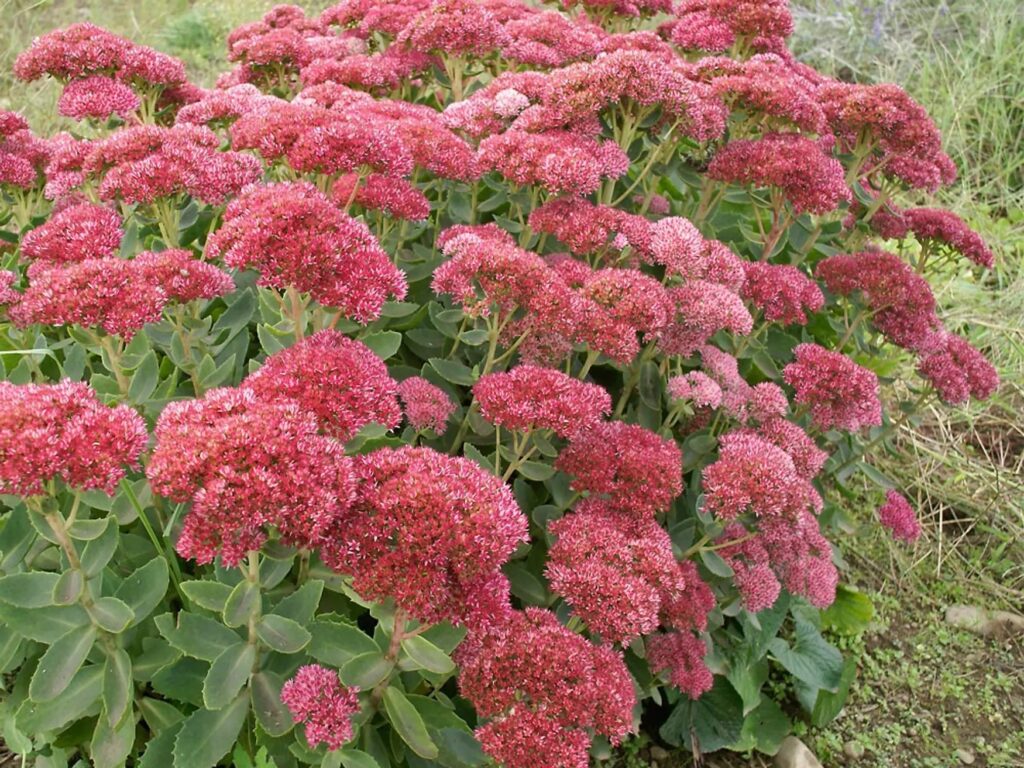3 Hard-to-Kill Houseplants for Beginners (and one picky one)
Houseplants can make a space feel comfortable and welcoming, purify the air we breathe, and provide something to care for. Whether you’re a beginner in the houseplant game or someone who wants the benefits with less work, we’ve made a list of our top 3 hard-to-kill houseplants for beginners.
What makes a houseplant ‘hard-to-kill’?
Some houseplants have a lot of specific needs. Correct amounts of light, water, humidity, and fertilizer are needed for a houseplant to thrive. But some houseplants can tolerate a broad range of these factors. These houseplants are often referred to as low-maintenance or easy-care houseplants. These plants are generally recommended to beginners or houseplant enthusiasts that aren’t able to care for their plants on a daily, or even weekly basis.
ZZ Plant
ZZ plants are upright plants that grow from a rhizome (like ginger) that can store water for periods of drought. They are a slow-growing houseplant but a mature ZZ plant can grow to be 5 feet tall. There are a few different varieties of the ZZ plant, including the striking, nearly black, Raven ZZ plant. This means you’ll be able to find one that perfectly suits your décor.
ZZ plants check all the boxes for being low-maintenance and will tolerate drought, low humidity, and low light. This makes them perfect for beginners or neglectful plant parents. With more light, your ZZ plant will reward you with showy new growth.
Light: Tolerates low light but prefers bright, indirect light. More light = faster growth. Place in a Northern window or a few feet away from a sunny window.
Water: Water only when the soil is completely dry. This often means only once every 3-4 weeks. The roots will store water so the biggest risk is over-watering.
Fertilizer: These plants don’t like to be fertilized too often. Half strength fertilizer 2 per year is sufficient.
Humidity: Your natural indoor environment is likely ideal for the ZZ plant. They do not like high humidity like some other houseplants. 40-50% is ideal but the range of tolerance is large.
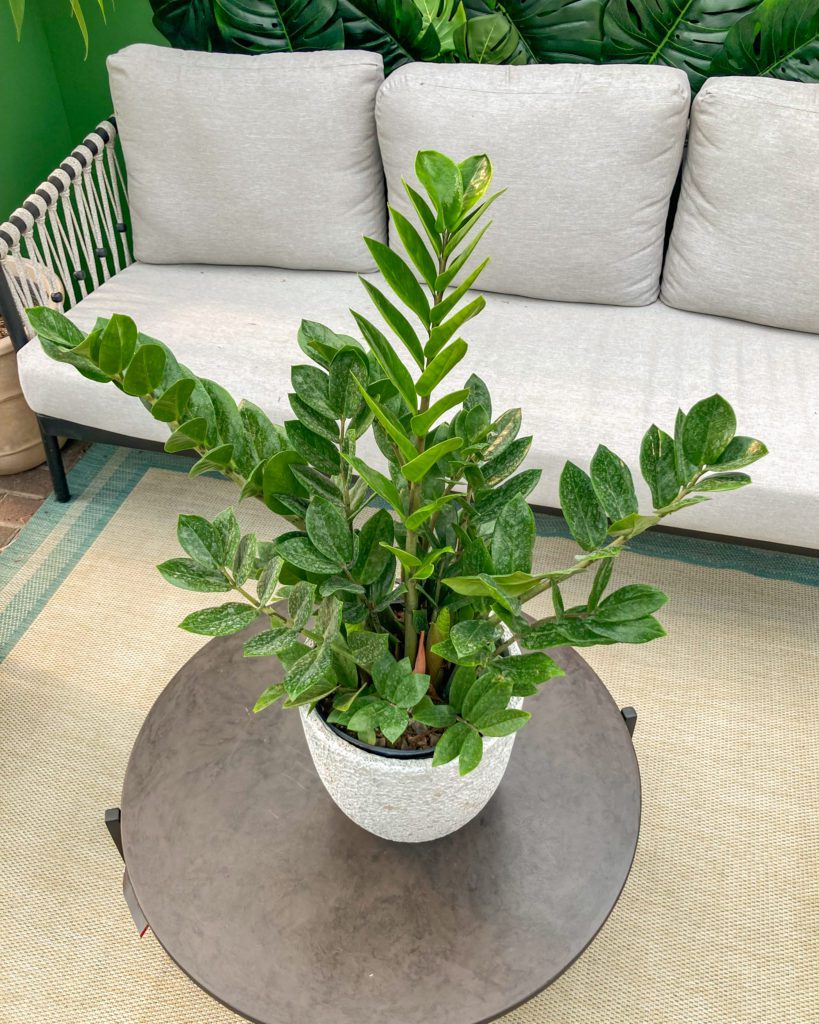

Pothos
There are over a dozen types of pothos ranging in color and variegation (white patterns on leaves). Some can be more difficult to care for but the more common varieties are generally very low maintenance. Some of the easier varieties are Golden Pothos, Neon Pothos, or Marble Queen. This is a trailing houseplant meaning it will cascade out of its pot towards the floor. You can also grow it in an upright fashion using a moss pole and plant clips.
Light: Low to bright, Pothos will tolerate most light conditions – just avoid direct light. The amount of light may influence the color a leaf size of your specific plant. Brighter light will help to keep the plant compact.
Water: Allow the soil to nearly dry out between waterings. This usually means every 2-3 weeks. Wilting means not enough water. Yellowing leaves mean too much water.
Fertilizer: Pothos are fast growers and appreciate some food from spring through fall. Feed them every 4-6 weeks with a general-purpose fertilizer.
Humidity: Pothos will tolerate dry air well but are at home in 50-70% humidity. A nearby tray filled with pebbles and water can help with this but is not necessary.
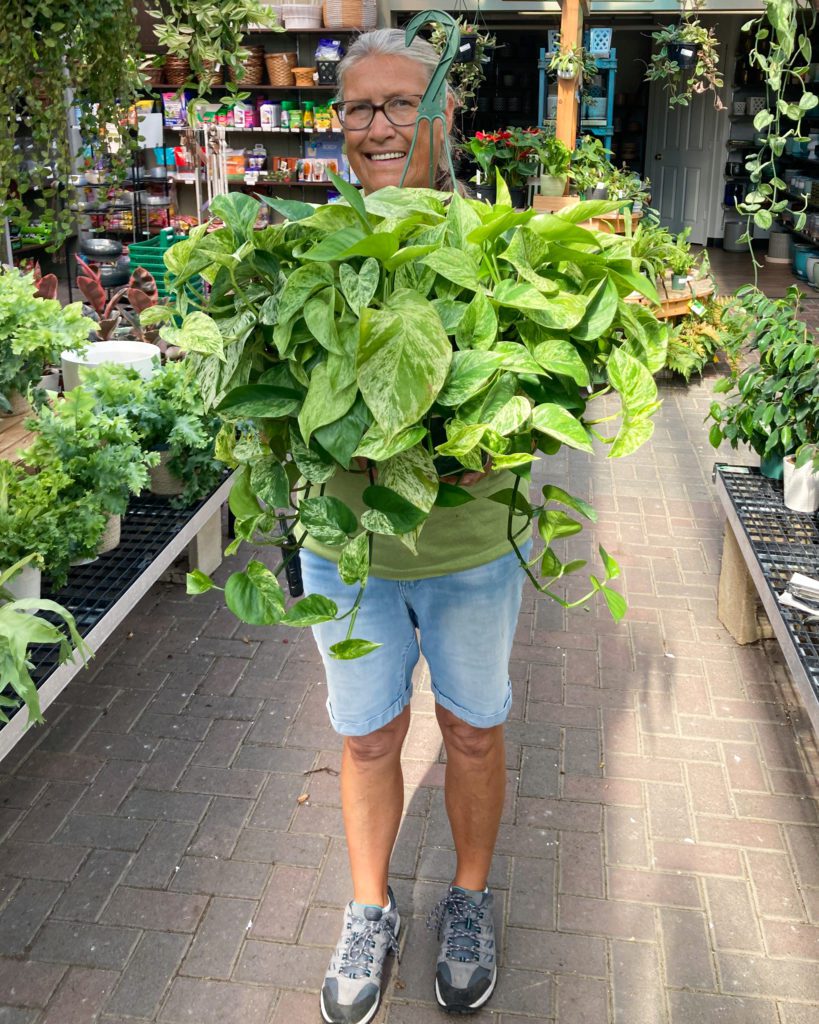

Snake Plant
Tolerant and easy to care for, snake plants are a common recommendation for your first houseplant. This is an upright plant that sends out long, smooth leaves with unique markings. No two snake plants are the same!
A lesser-known fact about snake plants is that they can actually bloom! Happy snake plants will send out long bloom spikes with whitish flowers. The main feature of these blooms is the fragrance. It’s an incredibly wonderful scent that will fill your home. This phenomenon is somewhat rare for Snake Plants kept indoors, but it’s a fun goal for those of us just getting into houseplants.
Light: Their preference is medium light but they will tolerate low light. I touch more light will increase the likelihood of a bloom. Direct light is an enemy of the Snake Plant.
Water: Root rot from too much water is the most common issue with a Snake Plant. Let the soil dry completely between waterings. This can mean going 4-6 weeks between waterings (sometimes longer in the winter).
Fertilizer: Fertilizer isn’t necessary but can stimulate growth. Use a diluted succulent fertilizer monthly through the growing season.
Humidity: Snake plants like it on the drier side. No special needs here. 30-50% is ideal which is a normal indoor humidity for most homes.
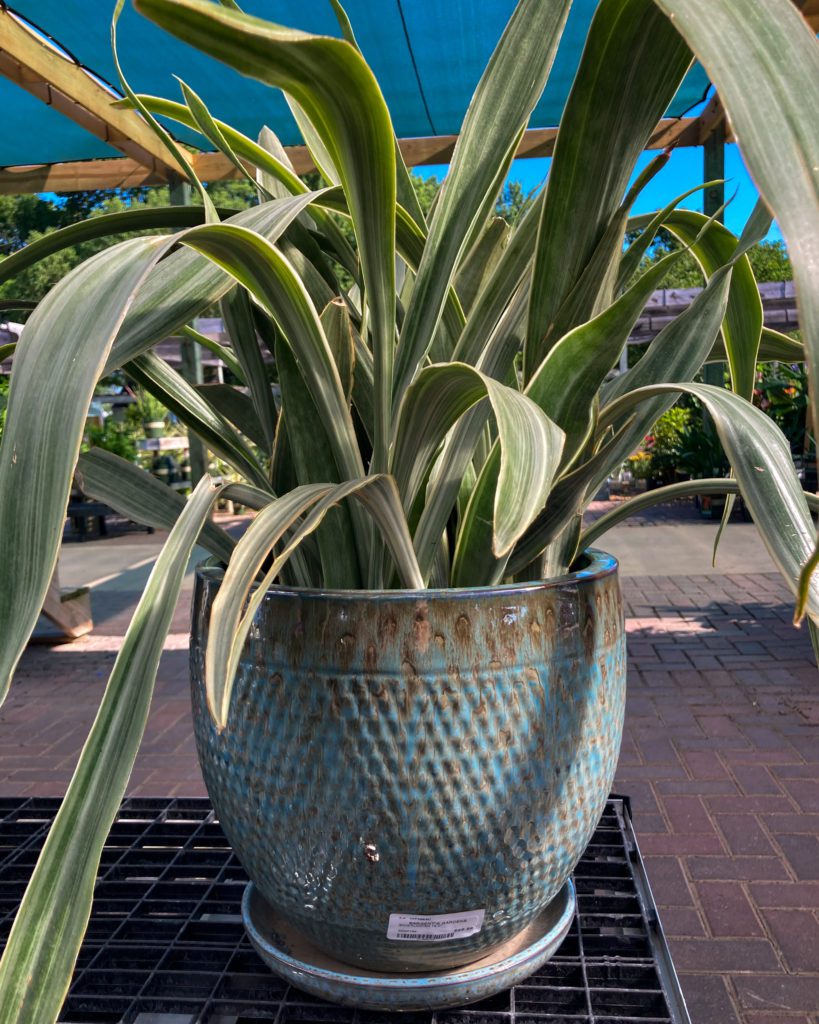

Looking to give yourself more of a challenge?
The plants above are low-maintenance and tolerate a good deal of neglect. But some plant parents are looking for more of a challenge. If you want the satisfaction of succeeding where many others have failed, look no further than the infamous Fiddle Leaf Fig.
Fiddle Leaf Fig
The champion of being fussy, particular, and punishing, the Fiddle Leaf Fig (technically a ficus) has frustrated many a houseplant enthusiast. If it’s so difficult, why do people grow them? Great question. Without getting into your childhood trauma and why some of us have self-punishing tendencies, the Fiddle Leaf Fig is a stunning plant and a staple of modern vogue-esqu interior design. In other words, it’s worth the trouble. Let’s dive into proper care for your new Fiddle Leaf Fig.
Placement: The Fiddle Leaf Fig prefers a warm, humid environment far from any drafts – air vents, doors, windows, etc. And choose wisely… If you ever feel like you want to move your Fiddle Leaf Fig, think again. They hate change and will often protest by shedding their leaves. A humidifier nearby can help keep your plant happy.
Sun: In short? Lots… A bright window is ideal for this plant. Remember in the paragraph above where we recommend keeping them away from drafty windows? You’re starting to see where this plant’s reputation comes from. Choose a window that you don’t often open, especially in the cool months. We recommend rotating your plant every month or so to keep it growing even and straight.
Water: The Fiddle Leaf Fig prefers evenly moist soil with a brief dry period in between watering. Water deeply when the top 2 inches of soil are dry. This pattern best mimics its native habitat.
Fertilizer: In typical fashion, Fiddle Leaf Figs like some fertilizer, but not too much. Our recommendation is to use a slow release granular fertilizer. This is a safe approach that makes it harder to over-fertilize.
Maintenance: Fiddle Leaf Figs get their name from their large, stunning leaves. You’ll want to care for these leaves like they’re a prized show dog. Regular dusting or washing of their leaves will help with photosynthesis and pests.
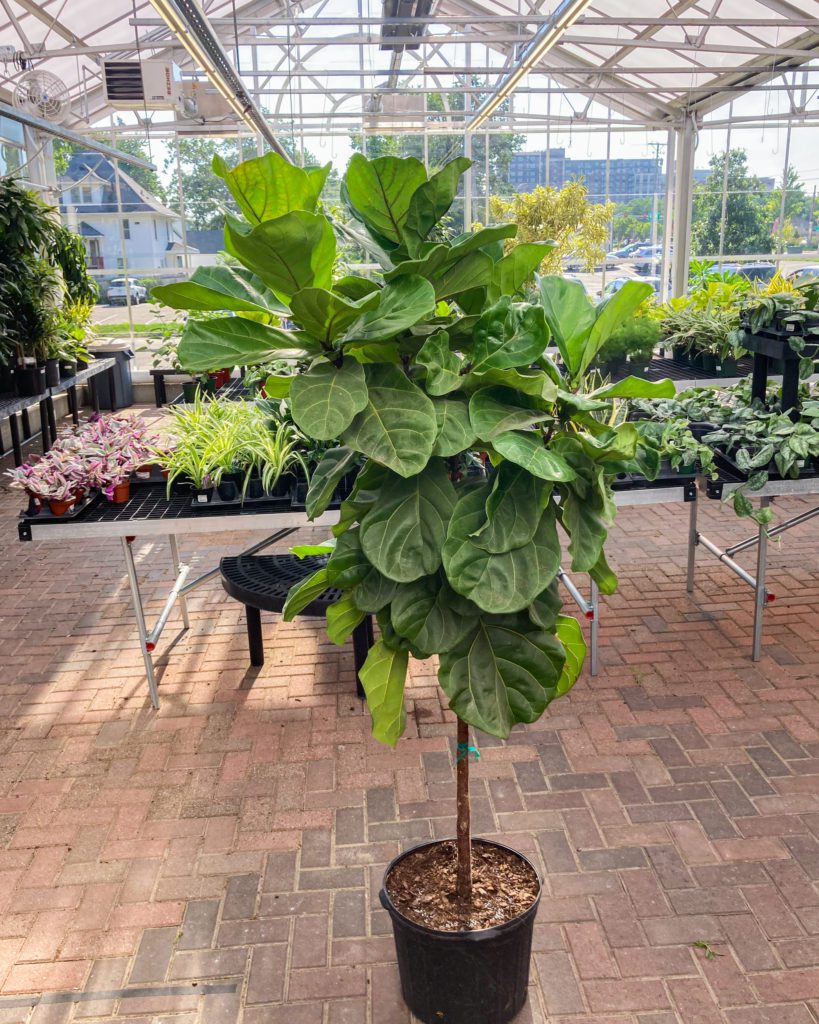

Feeling confident and ready to give this one a try? Sargent’s stocks a large selection of Fiddle Leaf Figs, and every other plant on this list, in our newly expanded houseplant greenhouse! We’ve also got houseplant experts on staff to answer any questions you may have!
Recent Blog Posts



